II: HOST & MICROORGANISM INTERACTION
1/297
Earn XP
Description and Tags
Name | Mastery | Learn | Test | Matching | Spaced |
|---|
No study sessions yet.
298 Terms
Infection
the introduction and uninhibited multiplication of a microorganism on or within a host
Endogenous Infection
Exogenous Infection
Nosocomial Infection
Healthcare-associated Infection
4 Types of Infection
Endogenous Infection
Result from microorganisms that are part of the patient’s normal flora
Exogenous Infection
infections occur from microorganisms with an external source
Nosocomial Infection
refers to an infection acquired in the hospital or healthcare setting
Healthcare-associated Infection (HAI)
a broader term that is used to describe those infections acquired while receiving health care for another condition
Infectious dx
the host dysfunction and tissue or organ damage caused by an infection, which typically manifests with medically significant symptoms
Etiologic/Causative Agent
a microorganism that causes the infection or disease
Reservoir of Infection
refers to the origin of the etiologic agent such as contaminated food, water, animals, or other humans
Pathogen
microorganisms (bacterium, virus, fungus, or parasite) that are capable of causing infectious disease
Primary / True Pathogen
has the ability to cause disease in a host regardless of the host’s immune system status or normal microbiota
Opportunistic Pathogen
can cause disease only in situations that compromise the host’s defenses
Normal Microbiota / Normal Flora / Indigenous Microbiota
refers to microorganisms that are regularly found at a particular anatomic site and generally do not cause infection
Incidence
a disease refers to the number of individuals infected in a population or the number of new cases in a population
Prevalence
describes the percentage of infected individuals in a given population at a given time
Endemic
when a disease consistently occurs at a constant rate in a given location
e.g., Malaria in Palawan
Epidemic
occurs when there are a larger number of cases of a disease in a given location
e.g., Cholera in Pasay
Pandemics
epidemics that occur around the world
Outbreaks
refer to instances where there is a disproportionately larger number of infected individuals in a fairly short amount of time
Morbidity
refers to the effects of the disease on the host such as organ damage
Mortality
incidence in which a disease causes death
Symptom
an indication of a disease that is experienced by a patient
Symptom
identify if symptom / sign
pain
Symptom
identify if symptom / sign
fever
Sign
an indicator of the disease observed by the healthcare provider
Biosafety Levels
used to identify the protective measures needed in a laboratory setting to protect workers, the environment, and the public
Biosafety Levels
levels are defined by BMBL
Biosafety Level I
Biosafety Level II
Biosafety Level III
Biosafety Level IV
Biosafety Levels
Biosafety Level I
- Lab contaminants
Biosafety Level I
- Those with no known potential of infecting healthy people
o Bacillus subtilis
o Mycobacterium gordonae
o Naegleria gruberi
examples of Biosafety Level I
Biosafety Level I
Threat to Lab Workers
Minimal
Biosafety Level I
Laboratory Features
• Basic safety procedures, called Standard Microbiological Practices,
• Require no special equipment or design features
Biosafety Level II
Acquired thru ingestion, mucous membrane, percutaneous exposure
Biosafety Level II
Threat to Lab Workers
Moderate
Biosafety Level II
Threat to Lab Workers
BSL-1 practices + lab coats, protective gloves, limited access, decontamination of all infectious waste, & biohazard warning signs
Biosafety Level II
Laboratory Features
Hand washing sinks, eye washing stations in case of accidents, & doors that close automatically & lock.
Equipment that can decontaminate laboratory waste, including an incinerator, an autoclave, and/or another method, depending on the biological risk assessment.
o Bacillus anthracis
o Staphylococcus
o Enteric pathogens like Salmonella & Shigella
o Viruses like HIV & HBV
examples of BSL II
Biosafety Level III
With potential for aerosol transmission (inhalation)
Biosafety Level III
Threat to Lab Workers
Highest Risk
Biosafety Level III
Threat to Lab Workers
BSL-2 practices + special lab clothing & controlled access
Biosafety Level III
Laboratory Features
• Must use controlled, or "directional," air flow to ensure that air flows from non-laboratory areas (such as the hallway) into laboratory areas
• Use of two self-closing, or interlocked, doors, sealed windows & wall surfaces, & filtered ventilation systems & BSL-2 lab features
o Mycobacterium tuberculosis
o Rickettsia
o Francisella tularensi
o Brucella
o Coxiella
o Coccidioides immitis
o Viruses like St. Louis Encephalitis virus
examples of Biosafety Level III
Biosafety Level IV
- Can cause life-threatening dx
Biosafety Level IV
Organisms encountered in research institutions
Biosafety Level IV
Threat to Lab Workers
Extreme Risk
Biosafety Level IV
Threat to Lab Workers
BSL-3 practices + entrance to a separate room where street clothing is changed & replaced with lab clothing; includes decontamination of all personnel & material before leaving the area
Biosafety Level IV
Laboratory Features
• Cabinet Laboratory – tests are done in a Class III Biosafety Cabinet
Biosafety Level IV
Laboratory Features
• Suit Laboratory – personnel are required to wear full-body, air-supplied suits, which are the most sophisticated type of PPE.
o MERS-COV
o Ebola
o Filovirus
o Arenavirus
o Arbovirus
o Small Pox Virus
examples of Biosafety Level IV
Biological Safety Cabinet
maintains a clean working environment by filtering the air with high-efficiency particulate air (HEPA) filters (Jagtap, et al., 2023).
Biological Safety Cabinet I
Biological Safety Cabinet II /
Vertical Laminar Flow
Biological Safety Cabinet III
Biological Safety Cabinet

Biological Safety Cabinet I
- – Pressure, ventilated cabinet
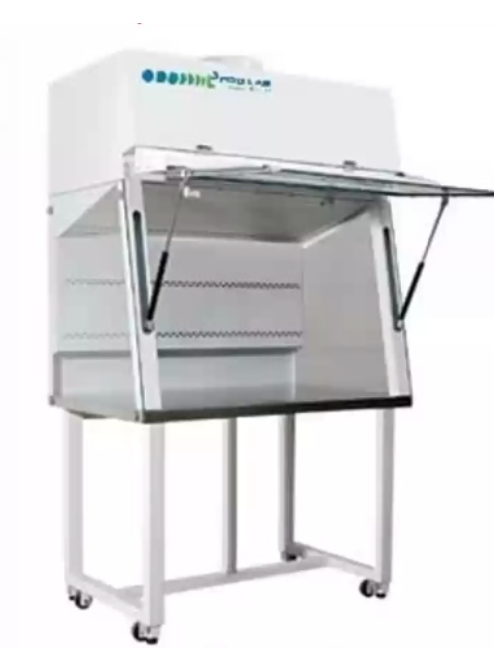
Biological Safety Cabinet I
- Unsterilized air enters & circulates within the cabinet, & the exhaust air from the cabinet is filtered by HEPA filter

Biological Safety Cabinet I
- Has the least protection because it is entirely open
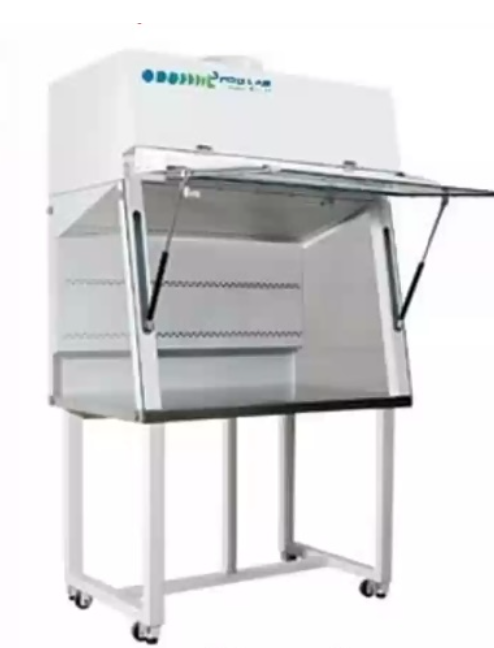
Biological Safety Cabinet I
Protect the worker & environment, not the organism
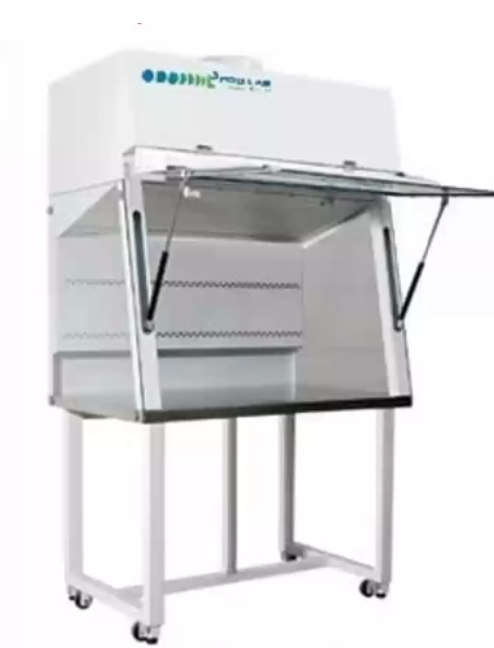
Biological Safety Cabinet I
Sterilizes Air To Be
Exhausted
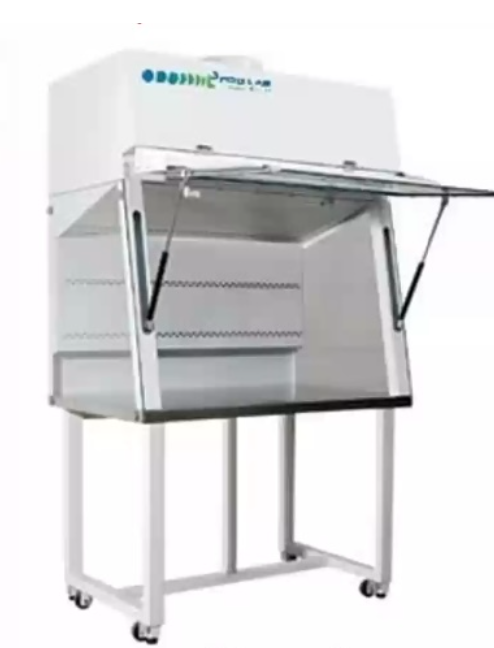
Biological Safety Cabinet I
Process
• Non-Pathogens
• (Bsl-1) Low Oncogenic Virus
• Low Toxic Chemicals
· 1 HEPA Filter
Biological Safety Cabinet I has how many HEPA filter
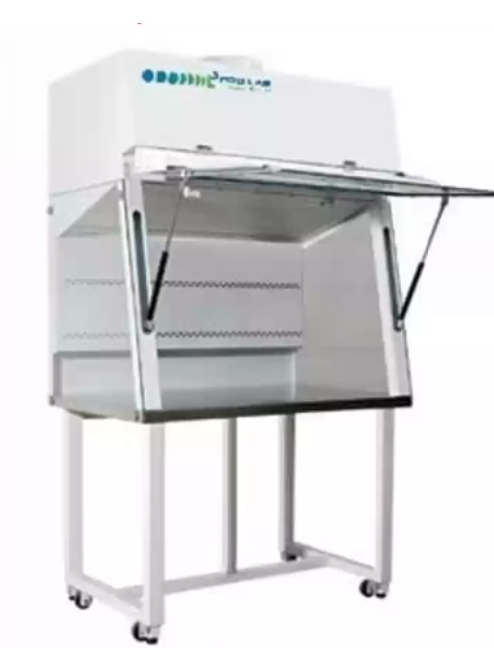
0.3 um
HEPA Filter of Biological Safety Cabinet I
Pore size
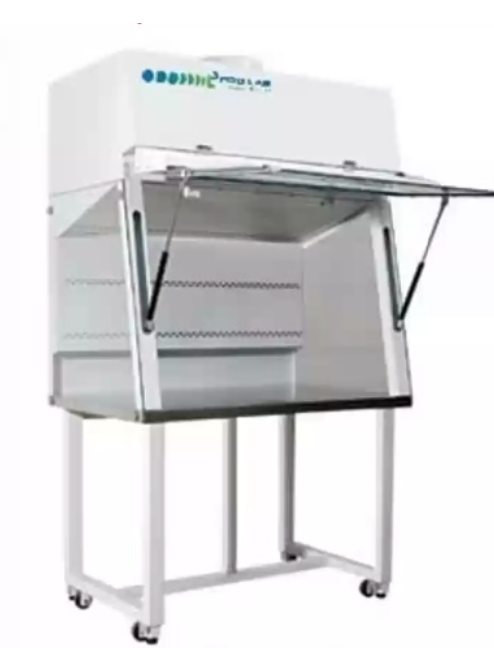
75 linear feet/min
HEPA Filter of Biological Safety Cabinet I
Air velocity
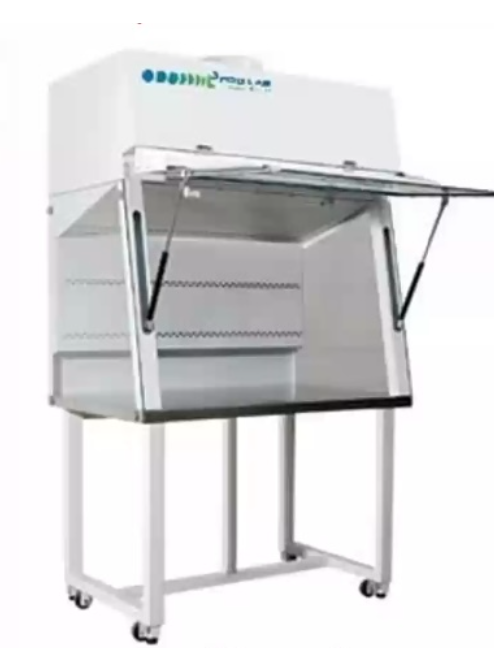
IIA: Fixed Opening
IIB: Variable Sash
Types of Biological Safety Cabinet II / Vertical Laminar Flow

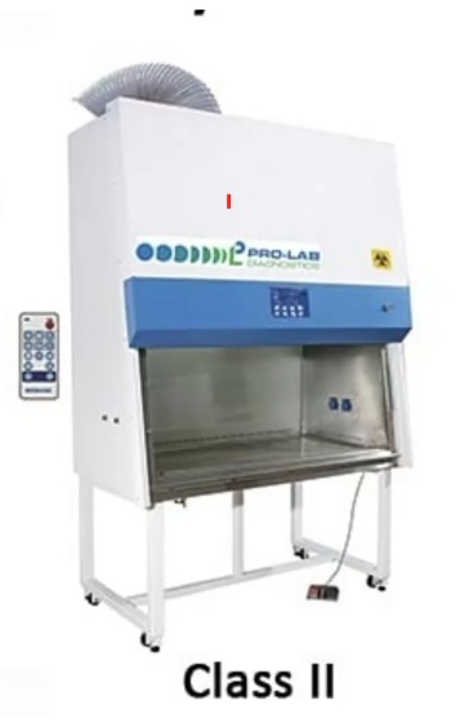
IIA: Fixed Opening
- Exhaust air inside the room
- 70% of air recirculated
• IIA1: 75 LFM
• IIA2: 100 LFM
Types of IIA: Fixed Opening

75 LFM
IIA: Fixed Opening
IIA1:
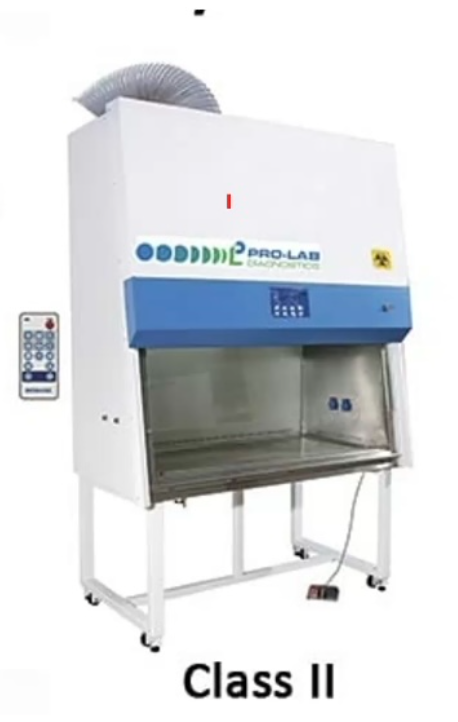
100 LFM
IIA: Fixed Opening
IIA2:

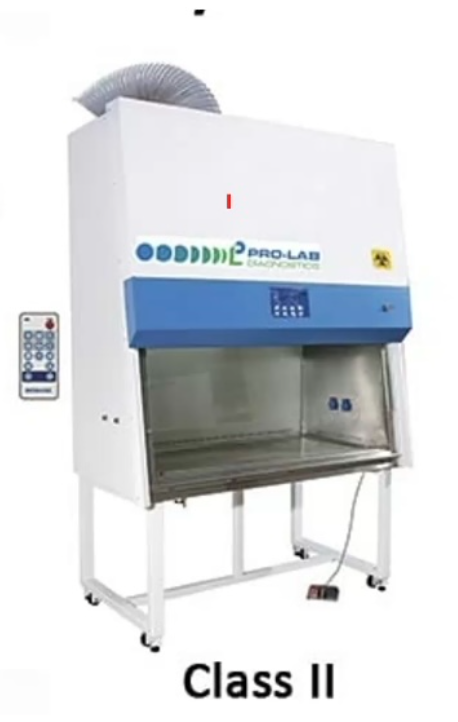
IIB: Variable Sash
- Exhaust air is discharged outside the building
- Protects the air, environment & the culture
75 – 100 linear feet/min
- Air Velocity of IIB: Variable Sash

• IIB1: 70% exhausted, 30% recirculated
• IIB2: 100% exhausted
Types of IIB: Variable Sash
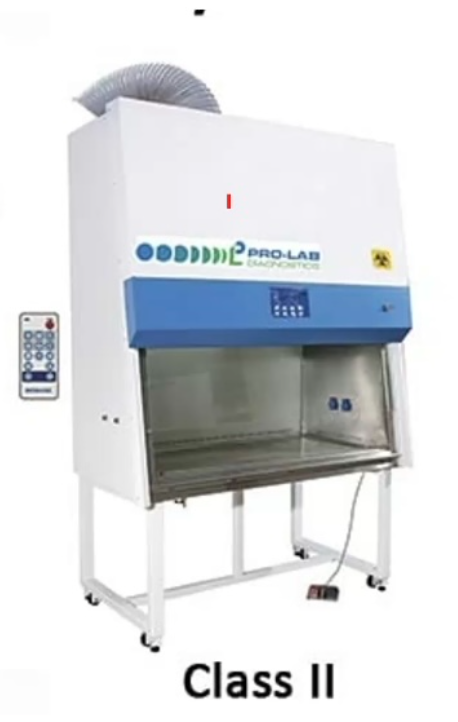
70% exhausted, 30% recirculated
IIB: Variable Sash
IIB1:
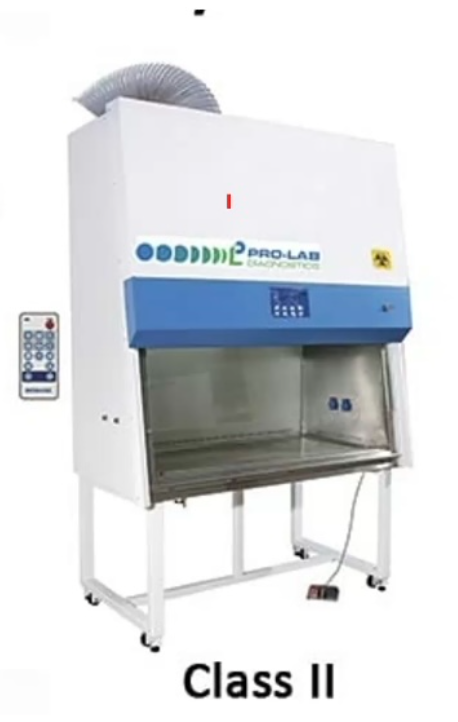
100% exhausted
IIB: Variable Sash
IIB2:
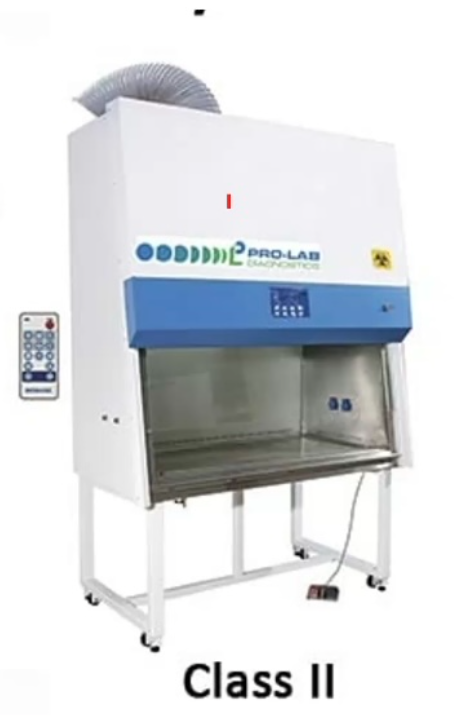
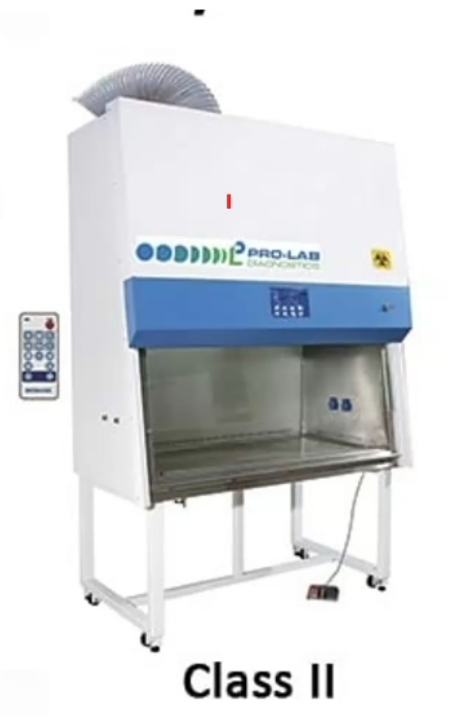
Biological Safety Cabinet II /
Vertical Laminar Flow
Sterilzes air to be Exhausted & the air that flows over the infectious material
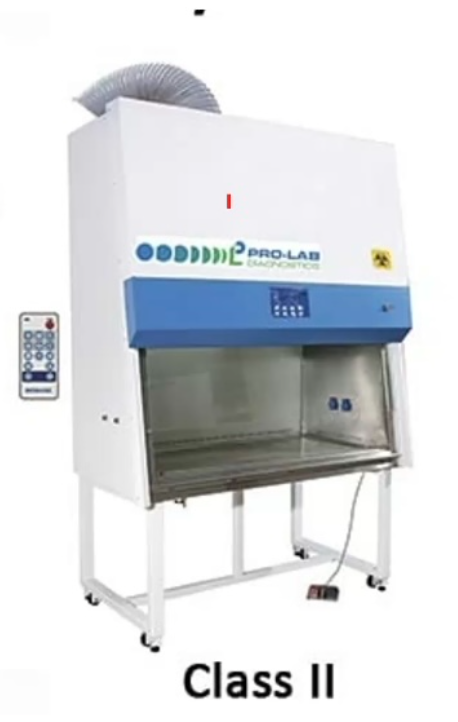
Biological Safety Cabinet II /
Vertical Laminar Flow
Process
• Bacterial & Fungal Pathogens
• Medium Risk Oncogenic Virus
• Chemicals
• Carcinogens (BSL-2)
Biological Safety Cabinet II /
Vertical Laminar Flow

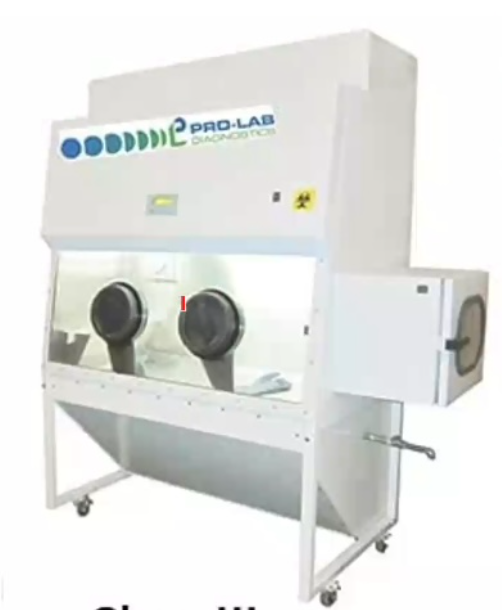
Biological Safety Cabinet III
Process
• Viral Pathogen (BLS-3)
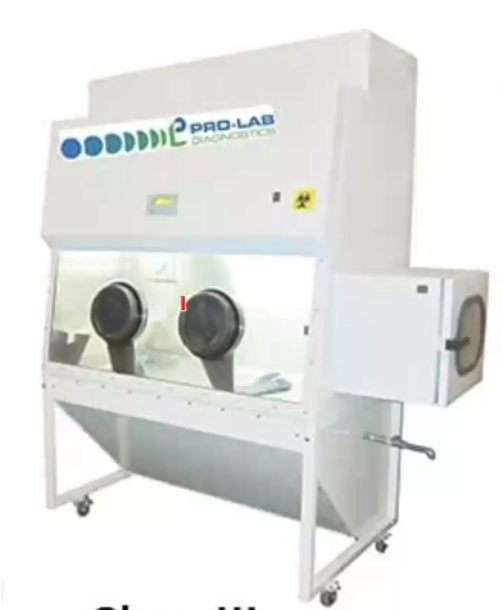
Biological Safety Cabinet III
- Most effective because the system is entirely closed
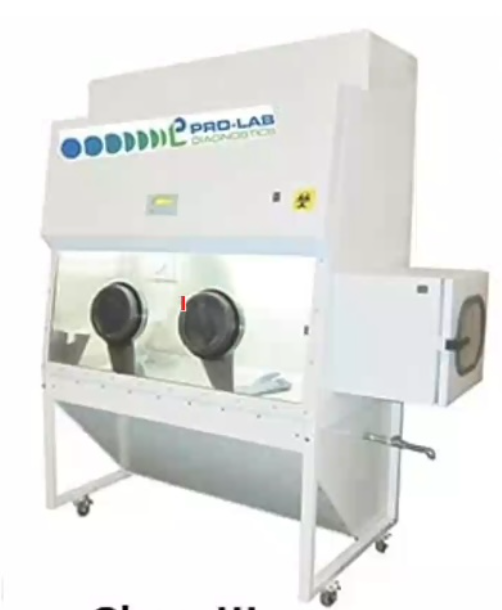
Biological Safety Cabinet III
Infectious material is handled using gloves attached & sealed to the cabinet.
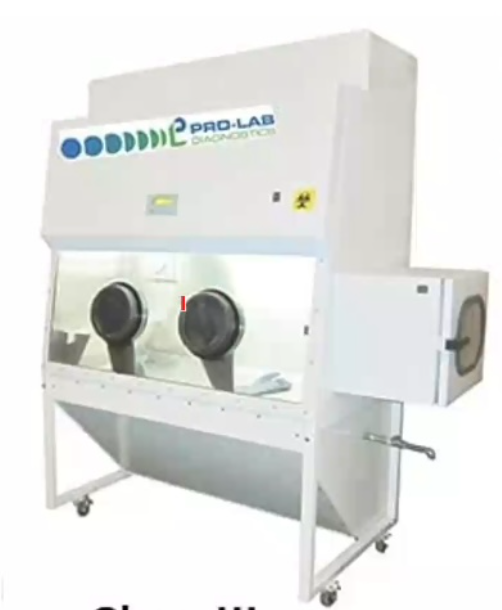
Biological Safety Cabinet III
- Highly toxic materials

Biological Safety Cabinet III
- Entire room is with – pressure
Biological Safety Cabinet III

Sterilization
destruction and removal of all forms of microbial life including their spores
Moist Heat
Dry Heat
Titration
Ionizing radiation / Cold Sterilization
Physical Method of Sterilization
o Autoclave
o Tyndallization
o Inspissation
Moist Heat
o Direct flaming
o Incineration
o Cremation
o Oven
Dry Heat
a. Ethylene Oxide (Gas Sterilant)
b. Formaldehyde vapor and vapor phase H202
c. 2% glutaraldehyde
d.Peracetic acid
Chemical Method of Sterilization
DISINFECTION
Refers to the destruction and removal of the pathogen but NOT NECESSARILY ALL MICROORGANISMS AND THEIR SPORES
a. Pasteurization
b .Boiling
c .U V
Physical Method of Disinfection
Antiseptics
Disinfectant
Chemical Method of Disinfection
Alcohols
lodophors
Chlorohexidine
Hexachlorophene
10% hydrogen peroxide
Antiseptics
Disinfectant
Halogens (Chlorine,lodine, Fluorine)
Heavy metals
Aldehydes
QUATS (Quaternary Ammonium Compounds)
Phenolics
Disinfectant
Autoclave
Principle: acts by coagulating or denaturing enzymes and proteins
Autoclave
121 °C, 15 psi, 30-60 minutes for medical waste and unused media
121 °C, 15 psi, 30-60 minutes for medical waste and unused media
Autoclave at - C, - psi, - minutes for medical waste and unused media
PRESSURE
Autoclave
what is used to raise the temperature, not to kill the organisms
T
Autoclave (t/f)
PRIONS are not killed by autoclave
B. stearothermophilus (every week), incubated at 56 °C
Indicator of Autoclave
56 °C
Indicator of Autoclave
B. stearothermophilus (every week), incubated at -
TYNDALLIZATION & INSPISSATION
Characterized as DISCONTINUOUS/ FRACTIONAL/ INTERMITTENT sterilization
TYNDALLIZATION
Uses flowing steam
Arnold Sterilizer
- The equipment used for Tyndallization is